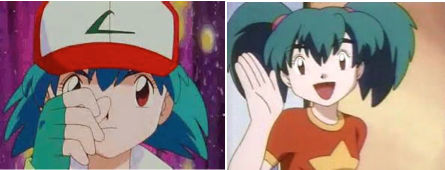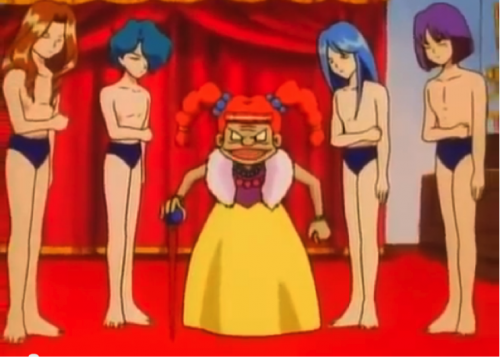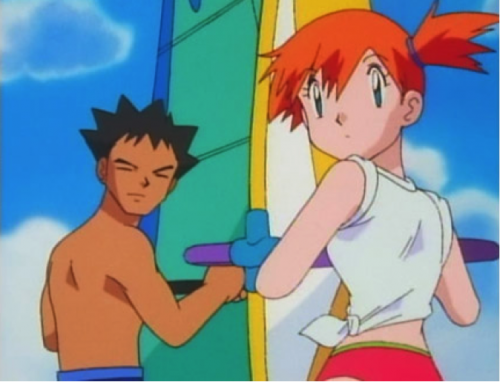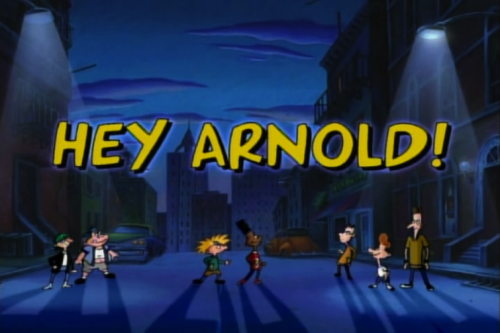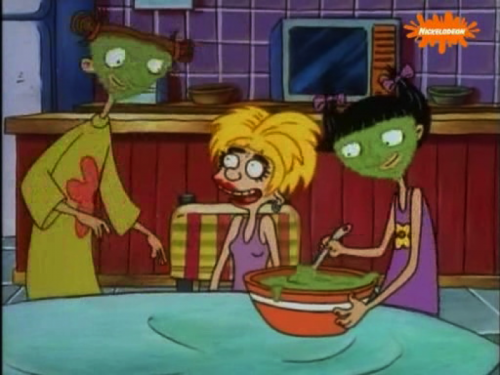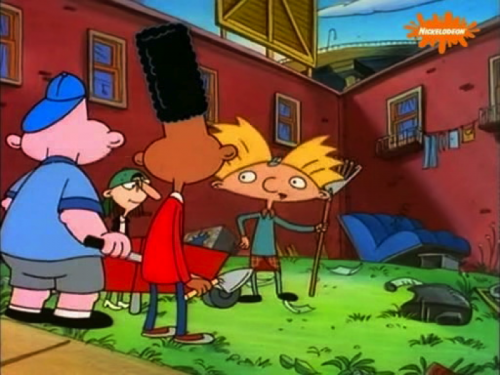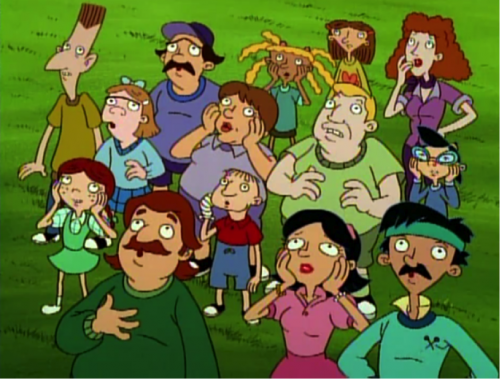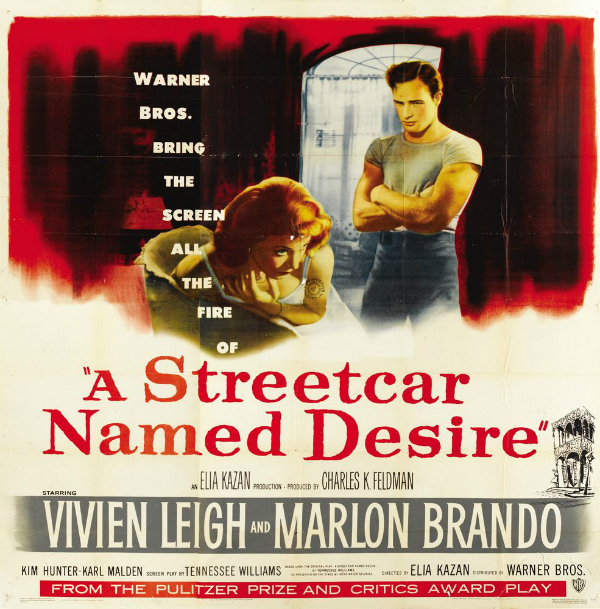
This is a guest post by Nia McRae.
Baby Daddy is a cute and funny show with a progressive edge. However, it’s not without its flaws. It deconstructs stereotypes in some areas but reinforces stereotypes in other areas. Its issues could be fixed by taking cues from one of my favorite modern comedy shows, Parks and Recreation.
First, the good: BD accomplishes its main goal which is to be funny. The funniest moments usually include Ben’s spitfire mother, Bonnie and goofball friend, Tucker, played by the talented Melissa Peterman and Tahj Mowry respectively. It shines in other ways too:
1. Male stereotypes are deconstructed.

Ben’s two roommates are Danny–his brother–and Tucker. All three of them are shown handling Emma with tender love and care. Their softness towards her is never framed as emasculating. In the beginning stages, the three bachelors fumble when it comes to taking care of Emma but it has less to do with them being guys and more to do with them being young and inexperienced when it comes to babies.
Danny is a handsome hockey player who predictably is a ladies’ man. In any other show or movie, he would be a dumb and/or mean sports player character or he would be an emotionally-stunted playboy archetype. He can be dumb at times but so can his brother who isn’t a sports player. So, Danny’s occasional dimwittedness is framed more as a family trait than a jock trait. He refreshingly contradicts the jock stereotype by being sensitive, romantic, and sweet. Despite his promiscuity, he is secretly in love with his childhood friend, Riley.
2. Old-fashioned mother stereotypes are dismantled.
Bonnie is far from the 1950s-stereotype perfect mother and that’s what makes her so entertaining. She’s a sassy, loving mother and just like her sons, she enjoys playing the field. Usually women, especially mothers, are expected to be the moral center. Sometimes, she is the voice of reason. But most of the time, she exhibits the same immaturity, narcissism, and selfishness as her sons but never does it go to the point of her being irredeemable. She isn’t demonized for being imperfect and free-spirited. Just like Elaine from Seinfeld, her quirks and flaws make her funny, charming and likeable.
3. Racial minority characters and gay characters aren’t stereotypical.
Tucker is one of the leads and he is African American. His personality has nothing to do with his race. Various racial minorities show up as minor characters throughout the series, never appearing as offensive stereotypes. Positive depictions of gay people are in the episode “The Christening” and a few other episodes too.
Now, let’s move on to the bad:
1. There are too many underwritten female characters.
In a show about a young man raising a daughter, you would think the female characters would be better than this. When it comes to the male characters on BD–like Tucker’s uptight dad, for instance–there are layers to them; they’re never as bad as they seem. However, if they’re not boring pretty faces like Tucker’s girlfriend, Vanessa, then most of the female side characters are just as evil as they seem. They’re also usually the source of conflict–whether it’s Riley’s childhood female rival or Danny’s female general manager. The worst offender was Emma’s mom, Angela, who was already framed as a terrible slut for forgoing being a mother. Her terribleness was further emphasized by having her be an evil seductress who tries to tear Riley and Ben apart.
Solution:
Add more three-dimensional female characters that have quirks and interests the way the male characters do. Every major and minor female character on P and R is unique and interesting because they aren’t solely defined by being a girlfriend. In P and R, April Ludgate could have easily been written as a one-dimensional vixen like Angela. But April’s meanness is not shaped by her sexuality. And every now and then, she shows her softer side. She’s grown over time, showing that she has great admiration and respect for Leslie even if outwardly she pretends to be annoyed by her.
Even though Tammy, Ron’s ex wife, can be argued to be similar to Angela of BD, she was written in a more tongue-in-cheek way for the audience to laugh at-especially considering the fact that the actors that play Ron and “evil” Tammy are married in real life. So, the character was more a parody on the seductress archetype.

2. There’s too much female rivalry and not enough female friendship.
Tucker, Ben, and Danny are roommates who have a friendship that’s a joy to watch; they joke with each other, they support each other, they tease each other, and they love each other even when they disagree. Their positive male friendship is at the center of the show while positive female friendships are sadly nonexistent. Female characters usually barely interact with each other. When they do, there’s either indifference or an adversarial feeling between them. Even Bonnie succumbs to it; she shows hostility towards the only other prominent female character, Riley. She gets along better with Tucker more than women her own age. There’s one episode where Riley explains she doesn’t have female friends because all girls are catty. I’m sick of male friendships being framed as superior to female friendships.

Solution:
P and R portrays female friendships so much better by not flattening female characters or their relationship to each other. I’m not asking BD to romanticize female relations either. Leslie Knope gets along better with some women (like Ann) than she does with other women (like Joan Callamezzo) just like she gets along with some men (like Ron) better than other men (like Congressman Jamm). That’s life. The show did have women disliking each other–for example, April disliking Ann. But they also showed women getting along in the form of Ann and Leslie. Who someone gets along with depends more on how their personalities mesh together rather than gender. P and R doesn’t set up a false dichotomy that all women are catty and all men are nice. Women get to be individuals just like the men do. Please follow suit, BD.

3. There aren’t enough entertaining platonic male-female relationships
Just like I don’t like gender stereotypes being used to dismiss same-sex friendships between women, I don’t want gender stereotypes being used to dismiss friendships between men and women. If women can’t be friends with women because of cattiness and they can’t be friends with men because of sexual/romantic tension then who can women befriend? The love triangle between Ben, Riley, and Danny and then Ben, Riley, and Angela adds to the archaic belief that men and women can’t be friends. Making Riley the love interest/childhood friend is an easy trope to use to create drama between the male leads. Tucker is the only one of the three male leads that doesn’t have feelings for her.
Solution:
Being friends with people of the opposite gender is important because ideally it can bridge empathy gaps. Leslie and Ron have a mutual respect for each other even when they don’t see eye to eye. Despite Ron being a super macho guy that you would assume to be sexist, he’s actually very supportive of Leslie. Whenever they have disagreements, it’s more to do with her enthusiasm for government than with her gender. They advise each other on different matters and they help each other out when one is in trouble. Their friendship isn’t framed as a consolation prize to the “superior” thing of being a couple. Instead, their friendship is presented as an edifying, significant thing that helps make them better people. And it’s not just about deep connections, friendships between male and females can be fun and lighthearted. Just look at Donna and Tom.

Add more compelling scenes with Tucker and Riley. Add to the community raising Emma by putting in female characters for the male characters to befriend. I’m not banning BD from showing romantic relationships. I’m just saying don’t add fuel to the “friend-zone” fire by showing male-female friendships as this desert/limbo/wasteland. Show the good sides of being platonic the way P and R does.
4. Stop scraping the comedic bottom of the barrel by making fat a continual punch line.
Riley, like Monica from Friends, goes from being fat and insecure to being skinny, still insecure, but more conventionally attractive and therefore, more aesthetically pleasing to the boy she likes. There are many jokes that refer to Riley once being fat. Danny loved Riley even when she was larger which I guess is supposed to show he has a heart of gold. But chubby women shouldn’t be framed as a walking punch line nor should they be viewed as unattractive beasts that only the purest hearted of men could love/pity.
Solution:
Take Donna of P and R for instance. She’s confident, witty, and beautiful and she has no trouble attracting men. She carries herself well and dresses in flattering clothing. She’s shown doing the rejecting rather than being rejected.

She doesn’t serve as a thing to be pitied. Unlike Riley, her weight isn’t a running gag. Riley’s transformation from ugly duckling to swan didn’t have to be the same old cliché of physical transformation. Why not have made her shyness the true problem instead of her perceived physical unattractiveness? Having her attractiveness stem from becoming more confident and vivacious would have been a nice change from the weight loss arc. It’s too late to alter her character back story now, so I suggest stopping the fat jokes altogether. Also, maybe introduce a Donna-like female character whose weight isn’t her sole defining trait.
I can see BD is trying to be an enlightened comedy and it has a lot of potential. By climbing out of its cliché pitfalls, it can become a truly modern show just like P and R has done. Not only can it improve in the ways I suggested and still remain funny, it can be even funnier. After all, the best humor comes from truth, not from stereotypes (unless you’re parodying those stereotypes, of course).
Nia McRae graduated summa cum laude from Medgar Evers College where she earned a Bachelor of Arts degree in Liberal Studies with a concentration in history. She has a strong passion for critiquing racial and gender politics in the media and putting it in historical context.






